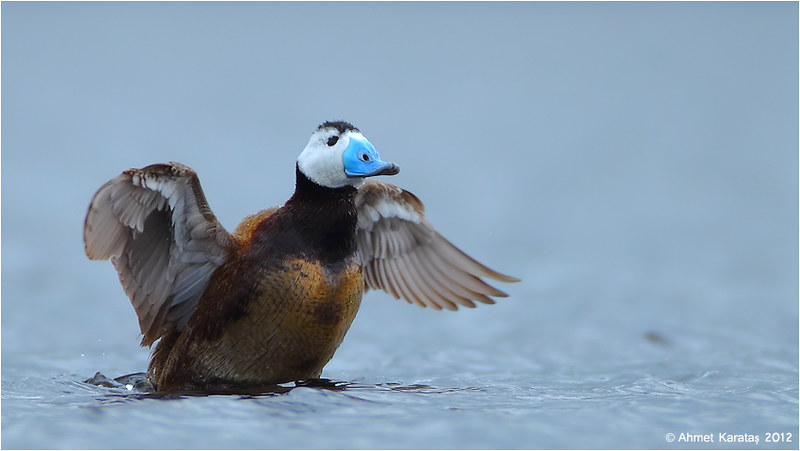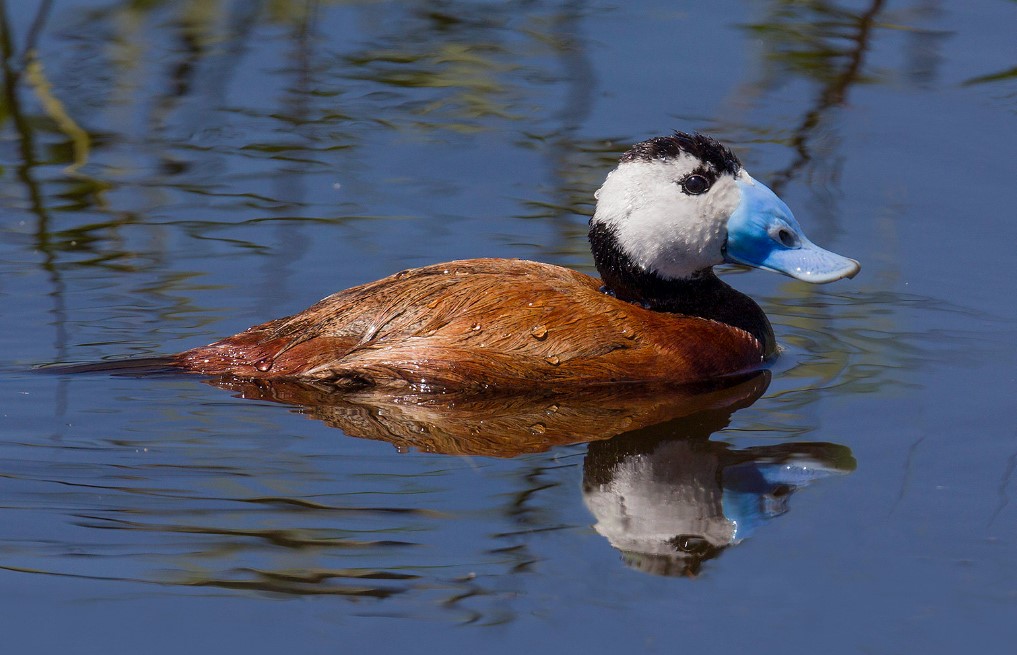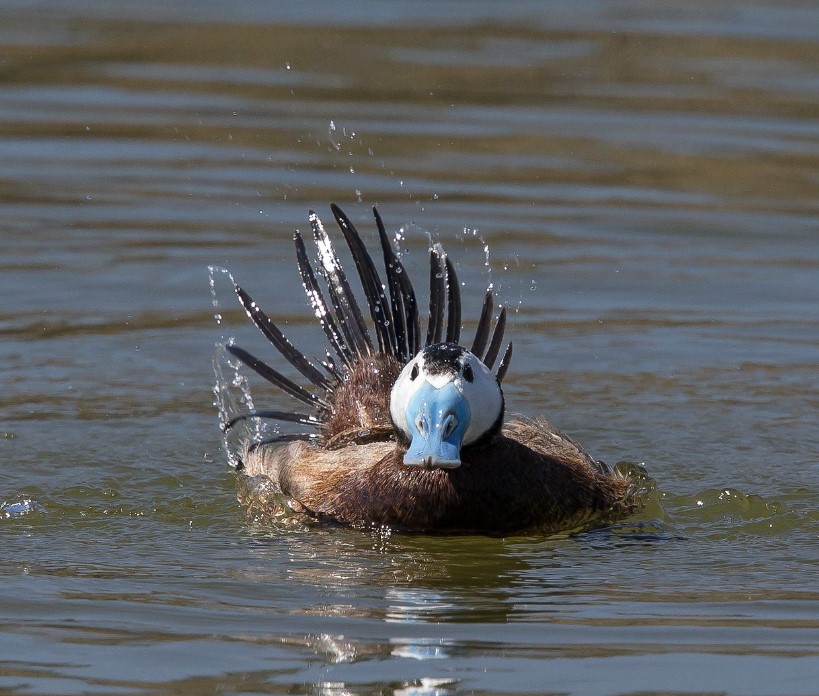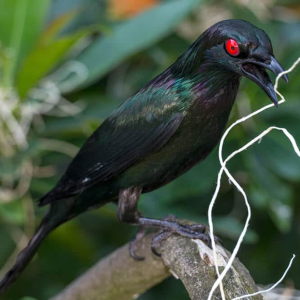The White-headed Duck (Oxyura leucocephala), also known as the Malvasía Cabeciblanca in Spanish, is a striking species of stiff-tailed duck native to Europe, Asia, and North

This species is often found in shallow, freshwater lakes and marshes, where it dives to feed on aquatic plants, seeds, and invertebrates. Known for its excellent diving capabilities, the White-headed Duck can stay submerged for extended periods while foraging.

Unfortunately, the White-headed Duck is currently classified as endangered due to habitat loss, pollution, and the introduction of non-native species like the Ruddy Duck, which has led to hybridization threats. Conservation efforts are in place across several countries to protect this unique species, including habitat restoration and controlled hunting regulations. The preservation of this duck is crucial to maintaining biodiversity in the wetlands where it thrives.

Africa. Recognizable by its distinctive appearance, the male White-headed Duck features a bright white head with a prominent blue bill, while the female sports a more subdued, mottled brown plumage with a darker face.





